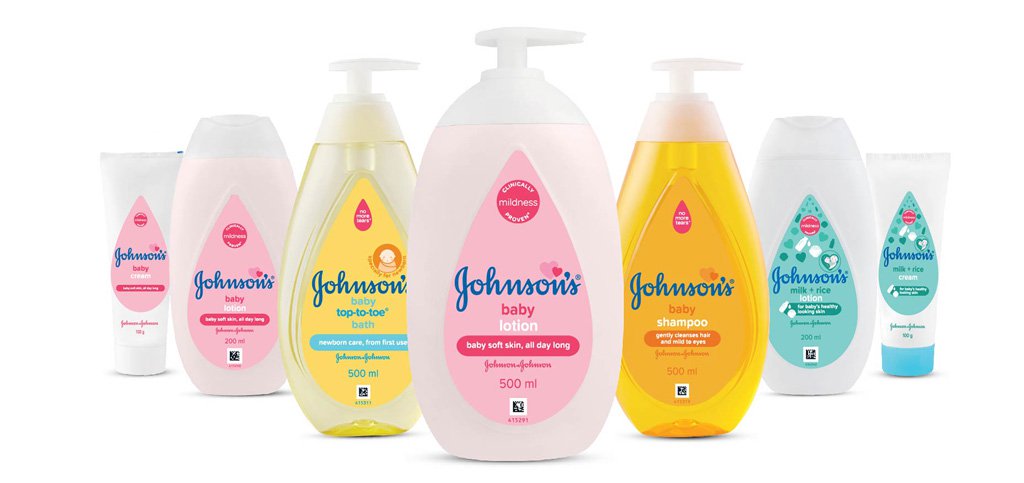A bath time routine can reduce stress for mothers and babies, especially when using a gently fragranced, foaming wash
Behavioral and neurohormonal responses of mothers and their children during two bath conditions
Every day bath routines are ideal opportunities to interact with babies through touch and their multiple senses.1-5
In addition, research has shown that these types of interaction, in association with tactile stimuli, decrease salivary cortisol levels. This study measured whether a baby’s bath can influence mother/baby behavior and mother’s and baby’s salivary cortisol responses.6
Method6
Participants in this study were 19 healthy mothers and their babies between 6 and 18 months old. Participants were divided into two bathing groups: baths with water only (the control group) and baths with water and a scented bath product* (the experimental group). Two home visits for each mother-baby dyad were conducted.
- Results were measured based on the Nursing Child Assessment Teaching Scale (NCATS), which allows observation and ratings of child-caregiver interactions
- Behavioral cues were observed, such as:
- Subtle engagement cues (eye widening, facial brightening, hands opening)
- Potent engagement cues (facial gaze or focus, mutual gaze, smile)
- Subtle disengagement cues (hiccough, facial grimace, eyes clinched)
- Potent disengagement cues (crying, whining, fussing)

Results6
- There was no significant change in NCATS scores after a bath in either group
- Regardless of bath condition, mothers’ and babies’ salivary cortisol levels decreased after a bath
- Control group mother—before-bath cortisol level = .154μg/dl; after-bath cortisol level = .134 μg/dl; P<.01
- Control group baby—before-bath cortisol level = .131 μg/dl; after- bath cortisol level = .095; P<.05
- Experiment group mother—before-bath cortisol level = .204 μg/dl; after-bath cortisol level = .174 μg/dl; P<.05
- Experiment group baby—before-bath cortisol level = .177 μg/dl; after-bath cortisol level = .134 μg/dl; P=<.10
- In the group that used the scented bath product, higher after-bath maternal NCATS scores were associated with lower neonatal after-bath cortisol levels
- r = -0.49; P < 0.05).
Conclusions6
Research demonstrates that bath time routines can positively impact a baby's growth and development. In this study, it was confirmed that a bath reduces stress for mothers and their baby. A scented bath product may enhance this experience as well. When mothers added the JOHNSON’S® test product to the bath, higher after-bath maternal NCATS scores and lower babies’ after-bath cortisol levels were observed. Gently fragranced bath products should be used to further relieve stress and enhance bonding for mother and baby.4-8
*JOHNSON'S® HEAD-TO-TOE® with 0.3% Jubbly Bubbly fragrance.
JOHNSON’S® HEAD-TO-TOE is trademarked as JOHNSON’S® TOP-TO-TOE in India. Please refer to our product page to find out more.
Reference:
1. Farroni T, Csibra G, Simion F, et al. Eye contact detection in humans from birth. Proc Natl Acad Sci USA. 2002;99(14):9602-9605.
2. Field T, Field T, Cullen C, et al. Lavender bath oil reduces stress and crying and enhances sleep in very young infants. Early Hum Dev. 2008;84(6):399-401
3. Dehaene-Lambertz G, Montavont A, Jobert A, et al. Language or music, mother or Mozart? Structural and environmental influences on infants' language networks. Brain Lang. 2010;114(2):53-65.
4. Sullivan RM, Taborsky-Barba S, Mendoza R, et al. Olfactory classical conditioning in neonates. Pediatrics. 1991;87(4):511-518.
5. Mindell JA, Telofski LS, Wiegand B, et al. A nightly bedtime routine: impact on sleep in young children and maternal mood. Sleep. 2009;32(5):599-606.
6. White-Traut R, Watanabe K, Wiegand B, et al. Behavioral and neurohormonal responses of mothers and their children during two bath conditions. Poster presented at: University of Illinois at Chicago College of Nursing. 2014; Chicago, IL.
7. Blume-Peytavi U, Cork MJ, Faergemann J, et al. Bathing and cleansing in newborns from day 1 to the first year of life: recommendations from a European round table meeting. J Eur Acad Dermatol Venereol. 2009;23(7):751-759.
8. Anderzén-Carlsson A, Lamy ZC, Tingvall M, et al. Parental experiences of providing skin-to-skin care to their newborn infant—part 2: a qualitative meta-synthesis. Int J Qual Stud Health Well-being. 2014;9:24907.
Related Content
Explore the range of NEW Johnson's® : 100% gentle care. From Day 1.
Guided by our mission to create the gentlest products backed by science, and our desire to address parents’ growing needs – we’ve improved inside and out.




